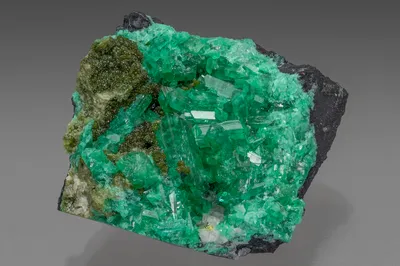Mineral Species
Chudobaite
Type Locality
Yes
Composition
(Mg,Zn)5[AsO3(OH)]2(AsO4)2·10H2O
Crystal System
Triclinic
Status at Tsumeb
Confirmed (type locality)
Abundance
Extremely rare
Distribution
Second and third oxidation zones
Paragenesis
Supergene
Entry Number
Species; TSNB83
Type Mineralogy
In 1957 Professor Hugo Strunz collected a number of specimens from the second oxidation zone that yielded several unusual and hitherto unknown minerals. One of these was a pink, hydrous arsenate of Na, K, Mg and Zn, collected on 31 Level and described as a new mineral by Strunz (1960a). Chudobaite was named for German mineralogist Karl Chudoba (1898-1976); it carries a "special project" status (dated 1962) in the IMA list of minerals (http://cnmnc.units.it/; accessed January 2023). Type material is conserved at the Ecole Nationale Supérieure des Mines, Musée de Minéralogie, Paris (catalogue number 50715); the Institut für Mineralogie und Kristallographie, Technische Universität, Berlin (catalogue numbers 86/66 and 86/65) and the Smithsonian Institution in Washington D.C. (catalogue number 162628).
General Notes
The chudobaite type specimen is from "the 1000 m level" (= 31 Level) in the second oxidation zone (Strunz 1960a). It comprises pinkish crystals (to 5 mm) of chudobaite with zincolivenite, olivenite and conichalcite. Chudobaite appears to be the youngest mineral in the type paragenesis.
The type specimen, however, was later considered to be atypical by Gebhard (1999), who suggested that colourless crystals (to 1mm), and the presence of chudobaite in the cores of zincolivenite crystals are the more common modes of occurrence. In the third oxidation zone (probably on 44 level) chudobaite occurs as colourless-white material in the cores of zoned zincolivenite crystals and as colourless crystals on ferrilotharmeyerite accompanying zincolivenite (Gebhard 1999).
Chudobaite has also been found as colourless crystals embedded in chalcocite (Gebhard 1999).
Associated Minerals
bornite; chalcocite; conichalcite; ferrilotharmeyerite; olivenite; rosasite; zincolivenite




